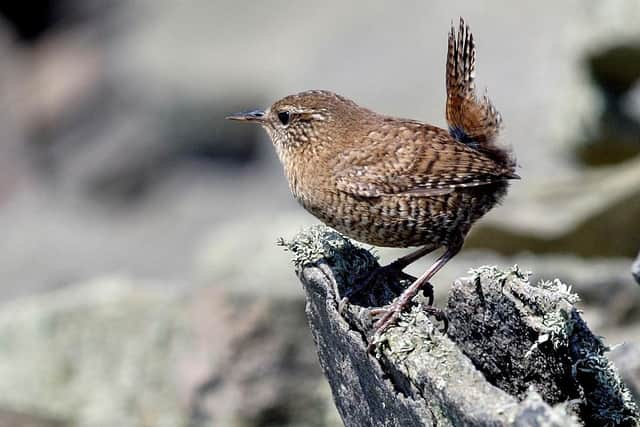Scotland's woodland birds flying high after Beast from the East setback


The Arctic blast brought heavy snowfall and freezing temperatures when it blew in in early 2018, causing widespread disruption across the UK.
It was also linked to a 12 per cent decrease in numbers of woodland birds between 2017 and 2018.
Advertisement
Hide AdAdvertisement
Hide AdNow the latest official statistics, published by national agency NatureScot, show populations have returned to a more stable position.
Wrens and goldcrests, two of the woodland species most affected by the harsh conditions, with numbers of both up by more than 20 per cent.
Surveys show farmland birds have experienced a similar recovery, while upland species continue to show a long-term decrease in numbers.
The findings are revealed in Scotland’s Terrestrial Breeding Birds 1994-2019 report, which use results from the UK Breeding Bird Survey, produced by the British Trust for Ornithology (BTO), Joint Nature Conservation Committee (JNCC) and the RSPB wildlife charity.
Simon Foster, trends and indicators analyst for NatureScot, said: “Bird populations typically fluctuate year-on-year but it’s encouraging to see that the recent dip in the fortunes of our woodland birds due to the harsh winter of 2017/18 appears to have been reversed in these latest figures.
“Climate change is also having an effect, with evidence of some species – such as the willow warbler – shifting northwards and increases in Scotland accompanied by declines further south.
“The picture is mixed, however, with some woodland species such as the treecreeper continuing to decline.”
YOU MIGHT ALSO LIKE: Plastic pollution build-up revealed in Scottish seabird nests
The longer-term trend for woodland birds is positive, showing an increase of 59 per cent over the past 25 years.
Advertisement
Hide AdAdvertisement
Hide AdChiffchaffs, great spotted woodpeckers and blackcaps are among those enjoying the biggest increases.
Over the same period farmland birds have increased by 14 per cent overall, with goldfinches and great tits showing the greatest long-term rises.
However, species including greenfinches, kestrels and lapwings are among those whose numbers have fallen.
Meanwhile, upland birds continue to disappear, with an overall drop of 18 per cent.
Five species – dotterels, curlews, black grouse, hooded crows and dippers – have seen the worst declines, with populations down by more than 45 per cent.
YOU MIGHT ALSO LIKE: Scotland’s got talons: Love-struck eagles spotted on sky date
A number of factors are blamed for long-term changes in upland bird numbers, including climate change, forest expansion and changes in management practices such as grazing and predator control.
Mr Foster added: “Winter can be a tough time for birds and people can do their bit to help wildlife during the colder months by putting out extra food and providing shelter in their gardens.”
NatureScot is working with partners on habitat restoration work to tackle climate change and help struggling upland birds, including the Peatland ACTION project, the Cairngorms Connect partnership and Working for Waders, as well as funding conservation work through the Biodiversity Challenge Fund.
Advertisement
Hide AdAdvertisement
Hide AdDr Ben Darvill, development and engagement manager for BTO Scotland, said: “It's thanks to the collective efforts of volunteers that we are able to produce long-term population trends for 66 widespread breeding bird species in Scotland.
“By combining these trends we can provide an indication of how birds are faring in different habitats.
“These indicators help to inform conservation policy and provide a measure of progress.”